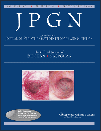Decreased Coenzyme Q10 Concentration in Plasma of Children with Cystic Fibrosis
ABSTRACT
Objectives:
Coenzyme Q10 (CoQ10) is an effective lipophilic antioxidant and protects against lipid peroxidation by scavenging radicals. Patients with cystic fibrosis generally have fat malabsorption; thus, we hypothesized that overall plasma CoQ10 concentration in pediatric patients with cystic fibrosis might be diminished. Because these patients have increased oxidative stress due to chronic pulmonary inflammation, we also assumed that the oxidized form of CoQ10 might be relatively increased.
Patients and Methods:
The total plasma CoQ10 levels and the oxidized and reduced form were measured by high-performance liquid chromatography in 30 children with cystic fibrosis (mean FEV1 % predicted = 88.5% ± 18.7%) and 30 age-matched controls.
Results:
Total plasma CoQ10 levels were significantly lower in the cystic fibrosis group as compared with the control group (0.87 ± 0.42 μmol/L and 1.35 ± 0.39 μmol/L, respectively; P < 0.001). When correcting for the lower serum cholesterol level in patients with cystic fibrosis, this difference remained significant: the CoQ10/cholesterol ratio (μmol/mol) was 268.8 ± 136.7 and 334.0 ± 102.9 in patients and controls, respectively (P < 0.05). However, the CoQ10 redox status was identical in patients and controls (86.4% ± 7.1% and 85.4% ± 7.3%, respectively).
Conclusions:
We found that the overall plasma CoQ10 concentration is lower in patients with cystic fibrosis, probably because of fat malabsorption. The CoQ10 redox status was not disturbed, indicating that CoQ10 could still be adequately regenerated in this group of patients with cystic fibrosis with mild-to-moderate pulmonary disease.




